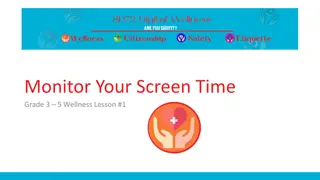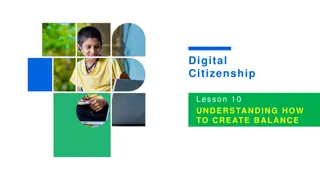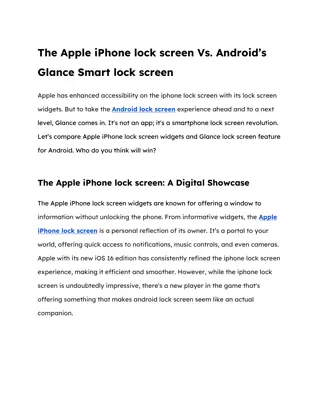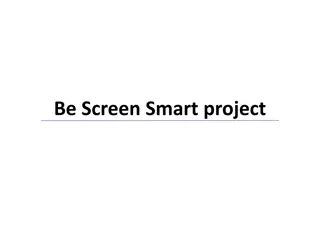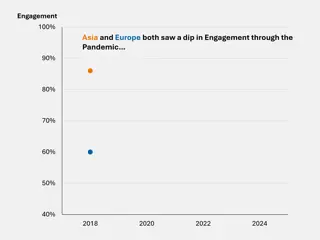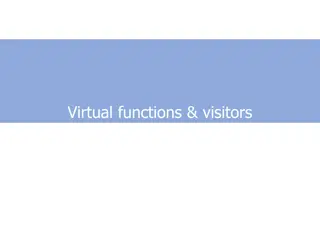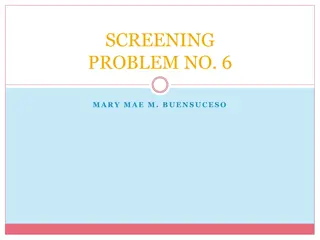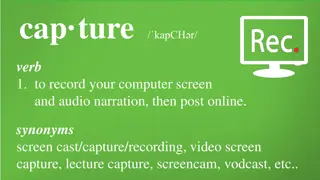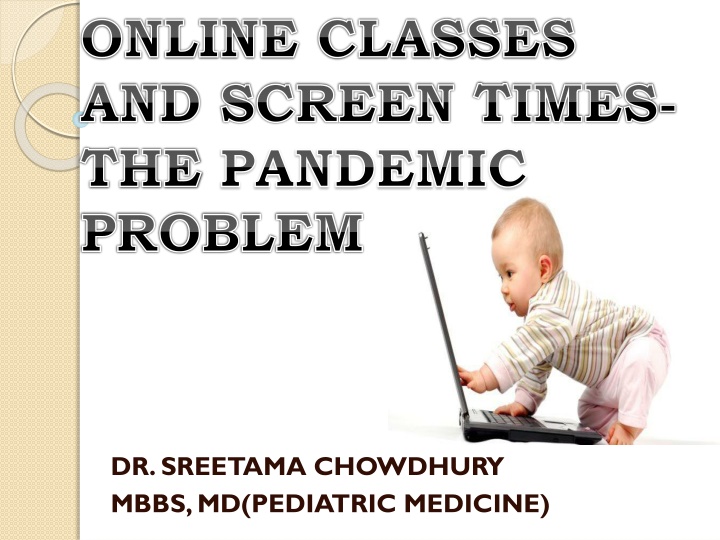
Screen Time Impact on Children: Insights by Dr. Sreetama Chowdhury, MD
Explore the impact of screen time on different age groups of children, from toddlers to adolescents, as discussed by Dr. Sreetama Chowdhury, MD. Learn about the cognitive, social, and behavioral effects of media use, factors influencing screen time, and the benefits of controlled exposure. Gain valuable insights on balancing digital media usage for optimal child development during the pandemic.
Download Presentation

Please find below an Image/Link to download the presentation.
The content on the website is provided AS IS for your information and personal use only. It may not be sold, licensed, or shared on other websites without obtaining consent from the author. If you encounter any issues during the download, it is possible that the publisher has removed the file from their server.
You are allowed to download the files provided on this website for personal or commercial use, subject to the condition that they are used lawfully. All files are the property of their respective owners.
The content on the website is provided AS IS for your information and personal use only. It may not be sold, licensed, or shared on other websites without obtaining consent from the author.
E N D
Presentation Transcript
ONLINE CLASSES AND SCREEN TIMES- THE PANDEMIC PROBLEM DR. SREETAMA CHOWDHURY MBBS, MD(PEDIATRIC MEDICINE)
Screen time: Time utilised by an individual in using digital media (Tablet/ phones/ computers/ television)
Toddlers and preschoolers: learning from media TODDLERS Hands-on exploration and social interaction of paramount importance. By 15 months, children learn words from digital media, have difficulty using them in real world By 2 years, children learn new words via videochatting.
PRE-SCHOOLERS cognitive, social and literacy skills can improve from well-designed television shows. Higher-order thinking skills and executive functions (task persistence, impulse control, emotion regulation, and creative, flexible thinking) best taught through unstructured and social (not digital) play, and parent child interactions.
Media use in school aged children and adolescents Media use patterns: TV widely used Average TV time is > 2 hrs /day in children older than 8 years Streaming and social media sites (Youtube and Netflix) usage increasing Almost 70 percent use multiple social media apps
Video games widely popular among adolescents, especially boys. Around 80% play videogames via smartphone or online.
FACTORS ASSOCIATED WITH INCREASED SCREEN TIMES Child related factors : Demographic Biological Behavioral Caregiver related factors Demographic Biological Behavioral COVID 19 Pandemic Child care media environment: Type of child care Access to media at child care Regulations Socio-cultural environment
Benefits of media use Increased exposure to news and current events, increases awareness on social issues Collaboration amongst students over projects Access to study materials Communication within families separated by geographic barrier
Social media provides access to support orgs like Milaap, Change which assists students with disabilities and financial constraints. Health care websites like Web MD provides health care and sexual health tips to adolescent age groups Fostering acceptance of LGBTQ community members
CONSEQUENCES OF INCREASED SCREEN TIME : TODDLERS/ PRESCHOOLERS EARLY LATE BMI Parent-child conflict Poor cognitive development Poor eating habits Aggressive and antisocial Sedentary habit Poor motor skill, language skills and cognition Sedentary habits Eating disorders and obesity Poor class room engagement Victimisation Disturbed sleep timing Non communicable diseases Hyperactive inattentive behaviour Emotional problems
OLDER CHILDREN / ADOLESCENTS Sedentary habits, snacking during watching TV leads to obesity. Blue light from smartphones and TV activity affects melatonin levels sleep disturbance Increased access of internet leading to problematic internet use(pornography, violence, phishing sites.) Internet gaming disorders
Cyberbullying and sexting Exposure of adolescents to substance use, sexual behaviours, self-injury via media usage eg blue whale challenge. U- shaped relationship between internet use and depression, fostering dissatisfaction.
AAP Recommendations for Toddlers and young children Infants and toddlers experience video deficit: difficulty learning from 2-dimensional video representations at younger than 30 months of age. Lack of symbolic thinking, immature attention controls, and the memory flexibility required to effectively transfer knowledge from a 2- dimensional platform to a 3-dimensional world.
For children <18 months, avoid use of screen media other than video-chatting. Parents should choose high-quality programming, and watch it with their children to help them understand what they're seeing. For children ages 2 to 5 years, limit screen use to 1 hour per day of high-quality programs. Parents should co-view media.
AAP Recommendations for school aged children For children ages 6 and older, consistent limits on the time spent using media, and the types of media. Media should not take the place of adequate sleep, physical activity and other behaviors essential to health
The new challenge- online learning Significant discrepancies between pros and cons in different countries 95% of students in Switzerland, Norway, and Austria have a computer to use for their schoolwork, only 34% in Indonesia do(OECD Students retain 25-60 % more material when learning online compared to only 8-10% in classes.
Time and location flexibility Catering to a wide audience Wide availability of content Immediate feedback Technical difficulties Time management Learners capabilities Ditractions, frustrations, anxiety Lack of personal attention WEAKNESS STRENGTH CHALLENGES OPPORTUNITIES Innovation and digital development Designing flexible programming Skill strengthening Innovative pedagogical approach Unequal distribution of infrastructure Quality of education Digital illiteracy Digital divide Technology cost
WHO recommendations in COVID 19 pandemic: Sedentary screen time (including playing video games) is : not recommended for 1-year old infants; and should be limited to no more than 1 hour per day for children 2 4 years old. Parents should: empower children with knowledge and information create a balance between online and offline activities. set clear rules about screen time and how, when and where children can use the Internet.
communicate the boundaries and rules clearly with children. install the latest software updates and antivirus programmes on device(s) used by children, set the privacy settings to high and activate parental control features especially for younger children. encourage children to be active. .
explain why limitations around screen time/online activities are being relaxed, that any additional screen time is temporary and normal routines will resume once isolation, quarantine or lockdown ends. educate children to be vigilant about cyber fraud and how to seek support when facing these issues. maintain regular sleep routines for children and encourage healthy eating.
School authorities should: develop or review and update online safety guidelines. communicate online code of conduct with students maintain and promote online counselling services for students.
Health and social care providers should: disseminate information among families about the risk of excessive screen. be vigilant about the possibility of excessive screen time or gaming during this period online psychological support and counselling sessions for people with gaming and gambling disorders. inform parents and caregivers about how to detect, respond and if necessary, report harmful online content
American Academy of Ophthalmology recommendations: 20-20-20 rule: every 20 minutes, look at least 20 feet away for 20 seconds. Alternate reading an e-book with a real book After completing a level in a video game, look out the window for 20 seconds. Pre-mark ebooks with bookmarks every few chapters to remind the child to look up.
Avoid using screens outside or in brightly lit areas. Adjust the brightness and contrast of the screen. Use good posture when using a screen. Encourage the child to hold digital media farther away: 18 to 24 inches is ideal. Remind them to blink when watching a screen.

